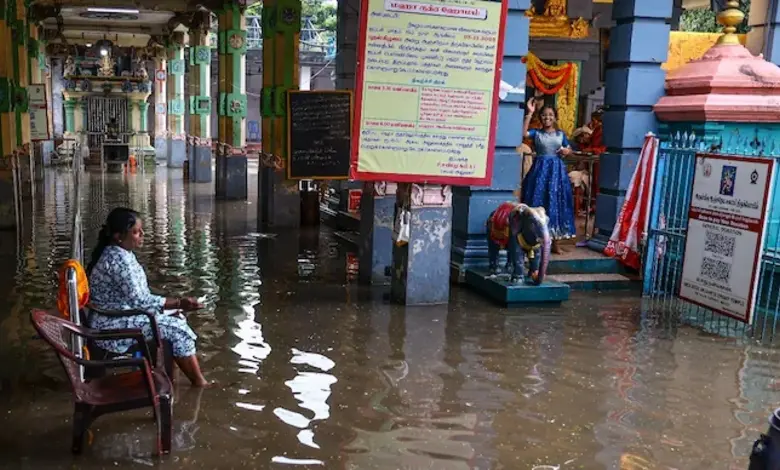With the northeast monsoon gaining momentum over Tamil Nadu, the Regional Meteorological Centre (RMC) in Chennai has sounded a cyclone alert alongside forecasts of intense rainfall across key districts. In response, authorities have shuttered schools and colleges in numerous areas to safeguard students amid the escalating weather threats.
The RMC’s Director, B Amudha, detailed that a low-pressure zone in the Bay of Bengal has evolved into a pronounced low-pressure system, positioned about 400 km southeast of Chennai. She projected that by midday Wednesday, this disturbance could escalate into a depression near the shores of northern Tamil Nadu, Puducherry, and southern Andhra Pradesh. Although it may reach deep depression intensity, Amudha noted that confirmation of cyclone or storm status would hinge on observations once depression formation occurs.
Chennai’s district officials confirmed the suspension of all school activities for Wednesday due to unrelenting downpours. Comparable directives extended to Cuddalore, Villupuram, Ranipet, Chengalpattu, and Trichy, where both educational institutions will halt operations. Thoothukudi limited closures to schools, while Salem and Pudukottai opted for school holidays alone. Officials in Puducherry and Karaikal mirrored these steps, closing learning centers amid the persistent deluge.
The Indian Meteorological Department escalated warnings with a red alert for eight districts—Villupuram, Cuddalore, Mayiladuthurai, Nagapattinam, Tiruvallur, Thanjavur, Pudukottai, and Ramanathapuram—signaling extreme rainfall risks. An orange alert blankets Chennai, Chengalpattu, Kancheepuram, Kallakurichi, Ariyalur, Perambalur, Thoothukudi, Tirunelveli, and Kanyakumari, urging high vigilance.
Tragedy struck in Cuddalore when heavy rains triggered a wall collapse at a residence around 10:30 a.m., claiming the lives of a 70-year-old woman, who perished on-site, and her 40-year-old daughter, who succumbed in medical care. Separately, severe flooding plagued sections of Pudukottai, exacerbating the statewide waterlogging woes.
ALSO READ : Chennai Braces for More Downpours: School Closures Extended Amid IMD’s Heavy Rain Alert
Chief Minister MK Stalin convened a review of emergency protocols, urging rapid resolution of citizen complaints and seamless continuation of rice procurement efforts. He mandated district collectors to equip relief shelters with essentials like meals, potable water, and medications, while deploying heavy machinery—including JCBs, boats, motor pumps, trucks, and chainsaws—for crisis response.
Deputy Chief Minister Udhayanidhi Stalin highlighted the monsoon’s surge, with Chennai and surrounding areas enduring steady showers. He anticipated another wave of precipitation in roughly two days, potentially surpassing last year’s volumes, and stressed proactive measures to shield residents. During field assessments, he observed locals voicing concerns about pooling water calmly, confident in the administration’s and elected officials’ commitment to swift action.
From October 1 to 21, Tamil Nadu, Puducherry, and Karaikal logged 160 mm of rain—59 percent above seasonal norms—underscoring the anomalously wet start to the monsoon.
